Reading time: 6 min.
March 2018, Machu Picchu – Peru
If you can dream it, you can do it
The big day has come.
Machu Picchu, the secret Inca city never discovered by the conquistadors, the reason we engaged into this crazy South American journey, is less than 100 kilometers from Cusco, where we are now. We cross-check all the possibilities to make it up there, and, having an infected tooth freshly removed a few days ago (yeah we’re gonna talk more about it in a later episode 🙂 ), we take the fastest option.
But wait, it can’t be that easy…there’s no train from Cusco!
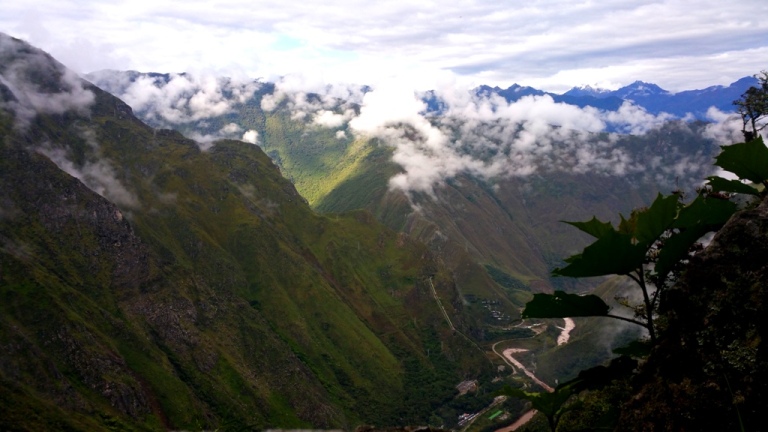
So we jump in a colectivo (collective bus) with way too many people and no air, and endure the heat and sinuous roads for 2 long hours. I’m kinda’ sick. After all this time being on the move across South America, this can’t be the place my body starts failing. I close my eyes, take a gulp of unexisting oxygen, and move on.
We are safely dropped off in the small town of Ollantaytambo. Rivers and rivers of tourists are flowing in all directions, getting off luxurious buses with trolleys in both hands and not-so-comfortable footwear. What do you need them for?
Anyway, we’re getting away from rain, and drink hot coca tea for about 3 hours.
Later on, we’re on our way to Aguas Calientes with the most expensive 1.5 hours train ticket on Earth.
The small Machu Picchu town is covered in darkness by the time we arrive. The hotel lady doesn’t find our reservation, and calls for en ‘Excel expert’, to figure all out. By midnight, we are finally in our room, setting the alarms for 3:30 in the morning.
“Sweet dreams are made of this
Who am I to disagree?
I travel the world
And the seven seas,
Everybody’s looking for somethiiiiiiiiiing.”
If that’s the alarm sound i heard every day before work, this morning it has a totally different meaning. 🙂
Let’s go!

The climb
As soon as we’re on the streets, we realize we’re not the only ones woken up. At 4 AM, everybody is awake. Hundreds and hundreds of people are silently walking in one single direction, through the darkness. We’re following the crowd, no words are needed. Most are waiting for the bus to go up, a few enter the jungle and start the hike.
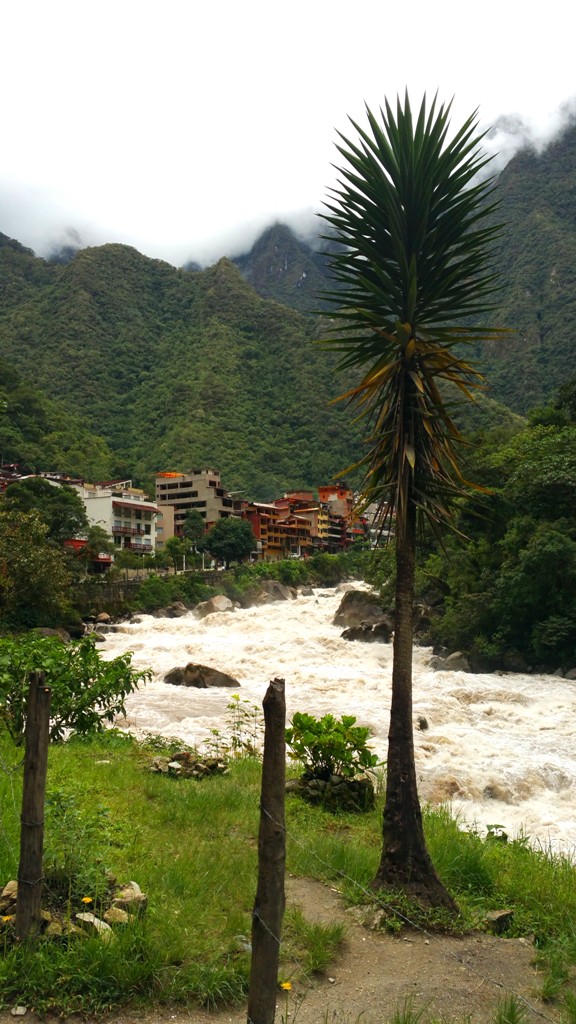
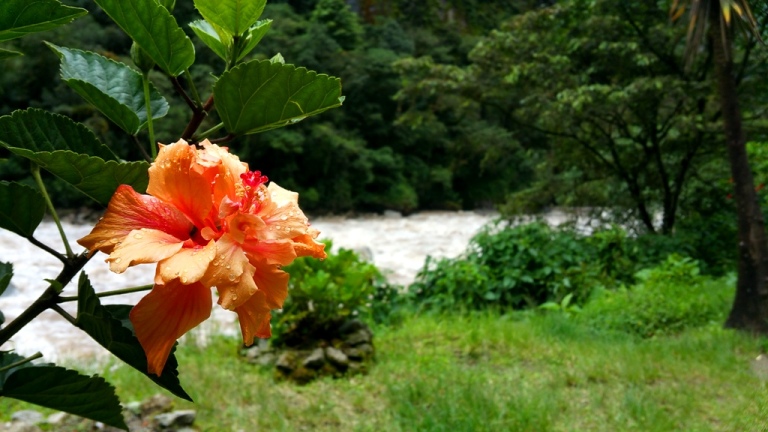
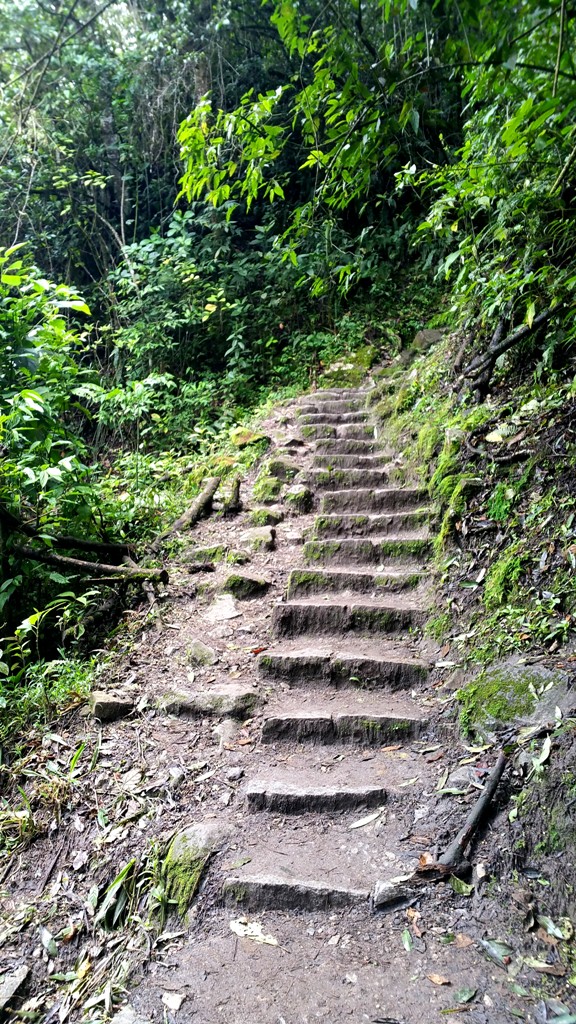
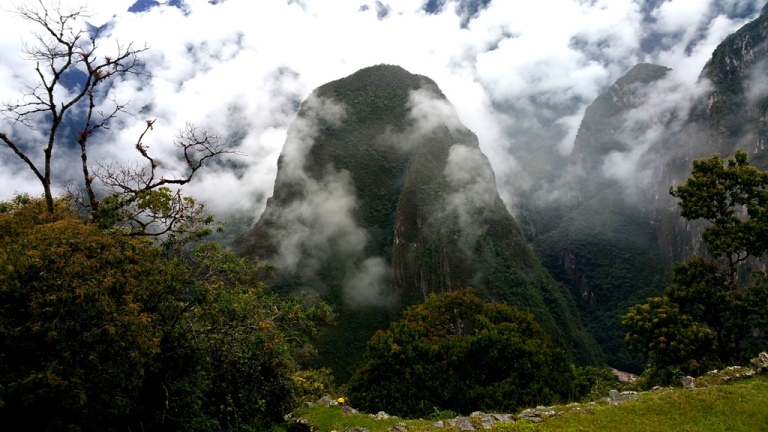

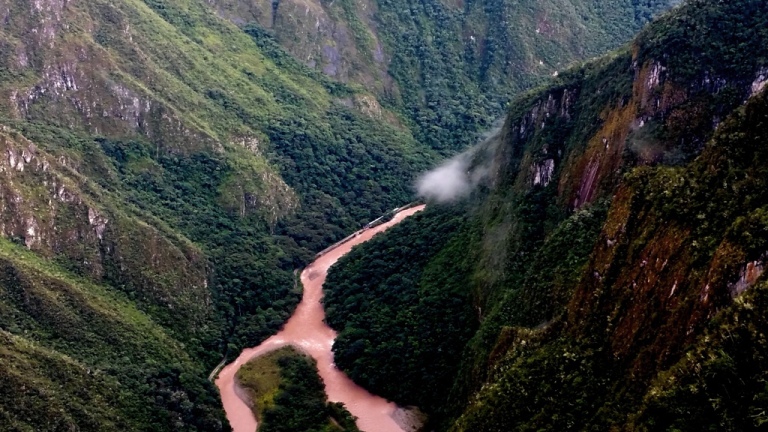
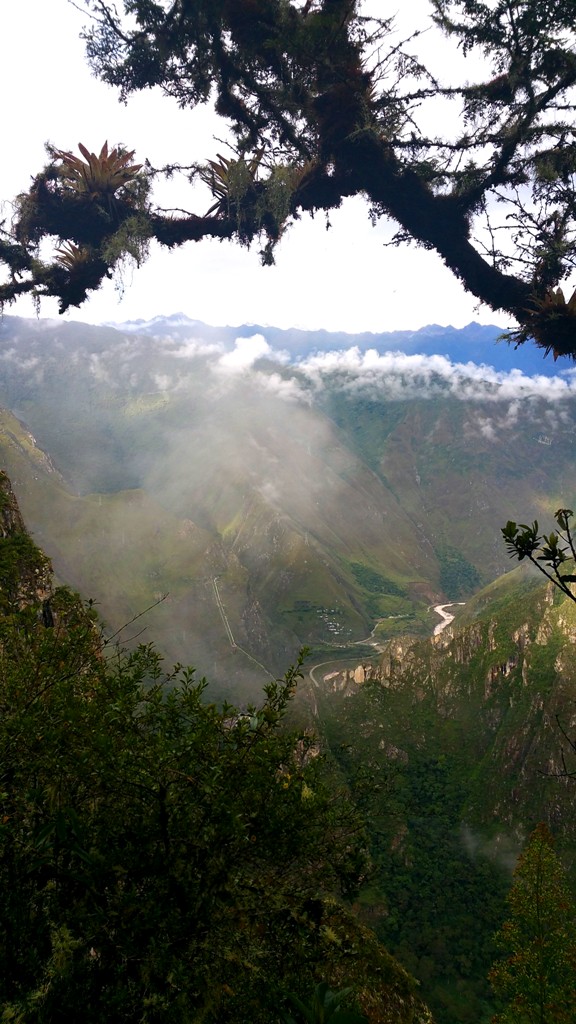
We’re getting closer every minute. My heart is beating like never before. I was dreaming of this moment for about 10 years.
At 6 AM we enter the gates of one of the 7 wonders of the World. If the moment is not memorable enough (but it is!), the first rays of sun touch the mountain. Puffy clouds of mist rise from the ground, leaving the old Inca city reveal its whole splendor.
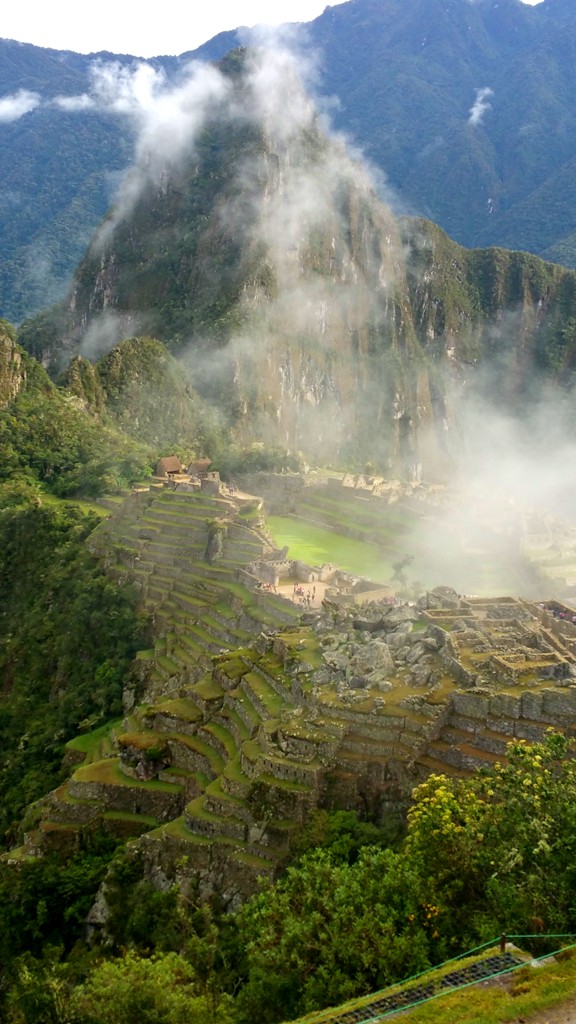
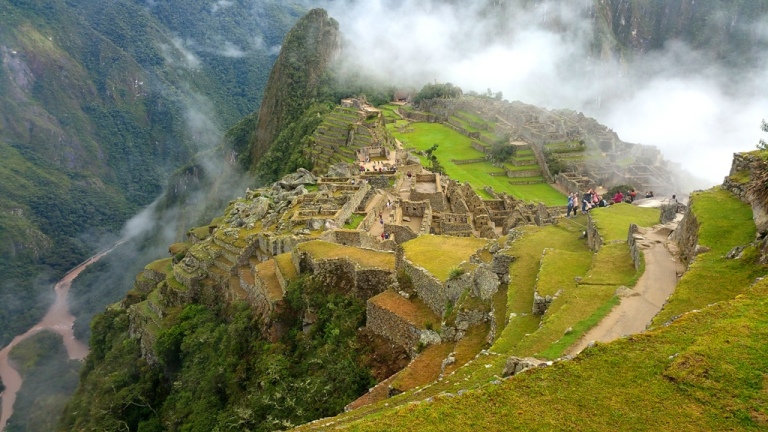
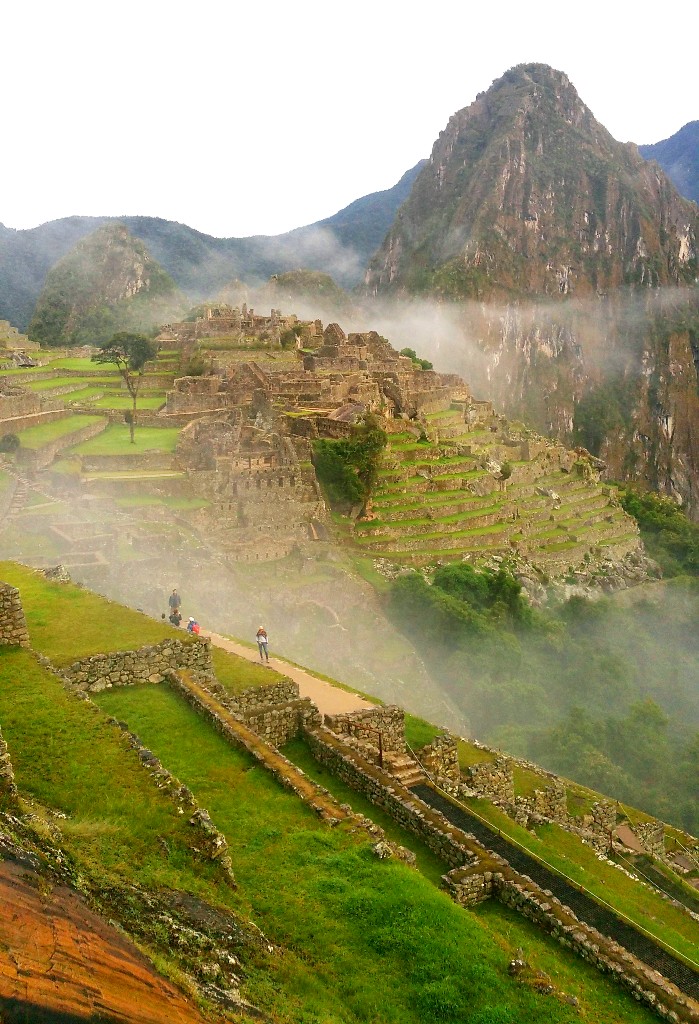
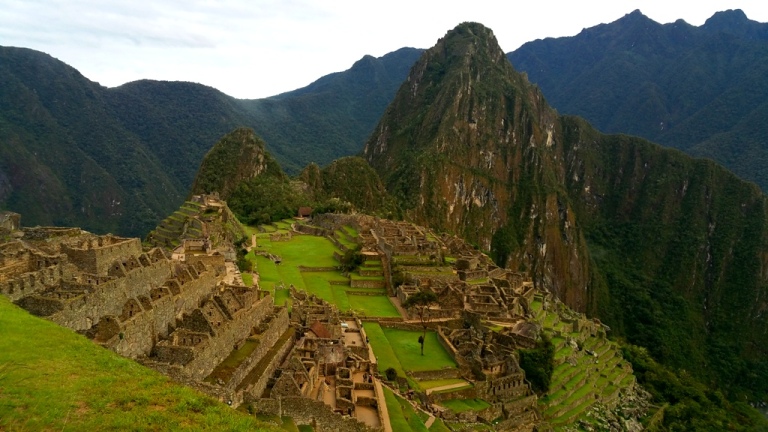
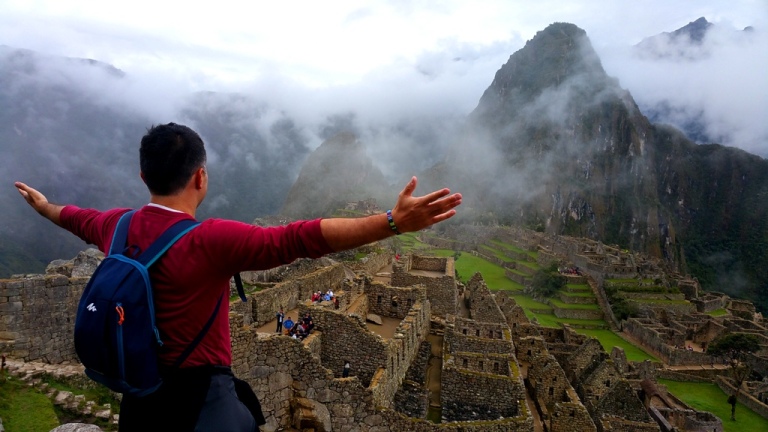
The temples are intact, impeccably preserved for 600 years. We will never know with certitude why the city was built, and then forgotten.
The dwellings at Machu Picchu were probably built and occupied from the mid-15th to the early or mid-16th century. Machu Picchu’s construction style and excavated evidence suggest that it was a palace complex of the ruler Pachacuti Inca Yupanqui (reigned c. 1438–1471). After the king’s death, there is no reason for the elites to make this journey up the mountain, and the servants leave the site. It is left abandoned, swallowed by the jungle, never discovered by conquistadors or other Europeans, for ~600 years.
It is found in 1911 by the Yale University professor Hiram Bingham, who was led to the site by a local Quechua-speaking resident (Machu Picchu means “Old Peak” in Quechua dialect). The high level of preservation and the general layout of the ruin are remarkable. Its southern, eastern, and western portions are surrounded by dozens of stepped agricultural terraces formerly watered by an aqueduct system. Walkways and thousands of steps, consisting of stone blocks as well as footholds carved into underlying rock, connect the plazas, the residential areas, the terraces, the cemetery, and the major buildings.

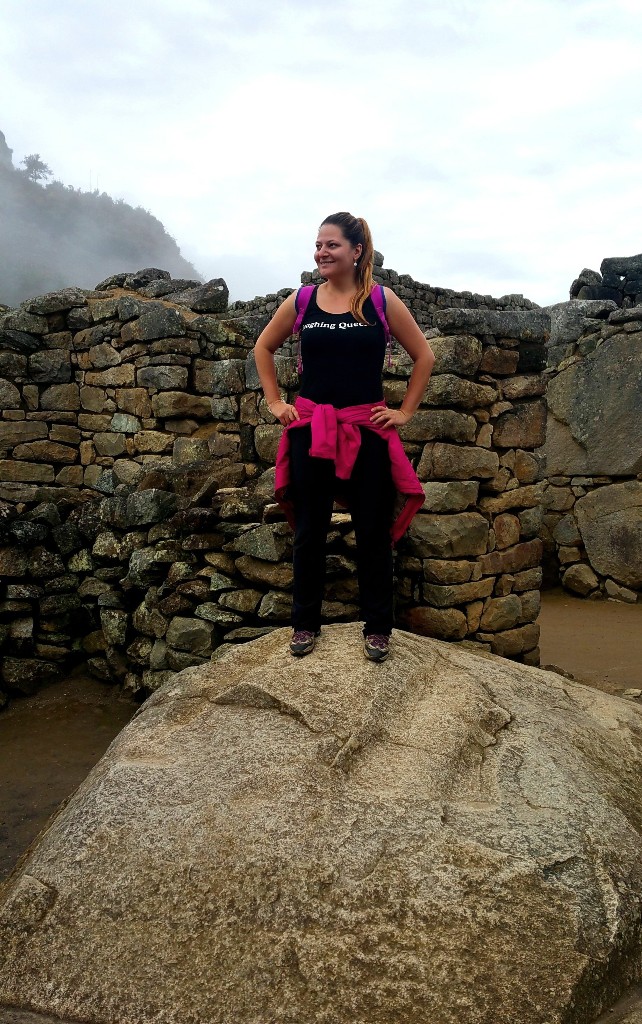
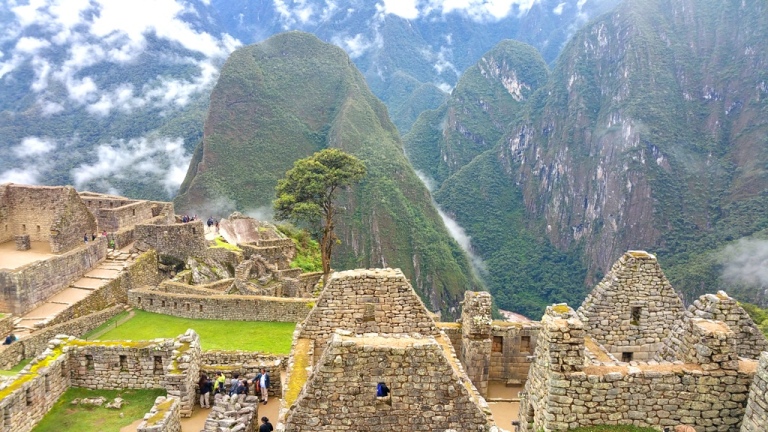
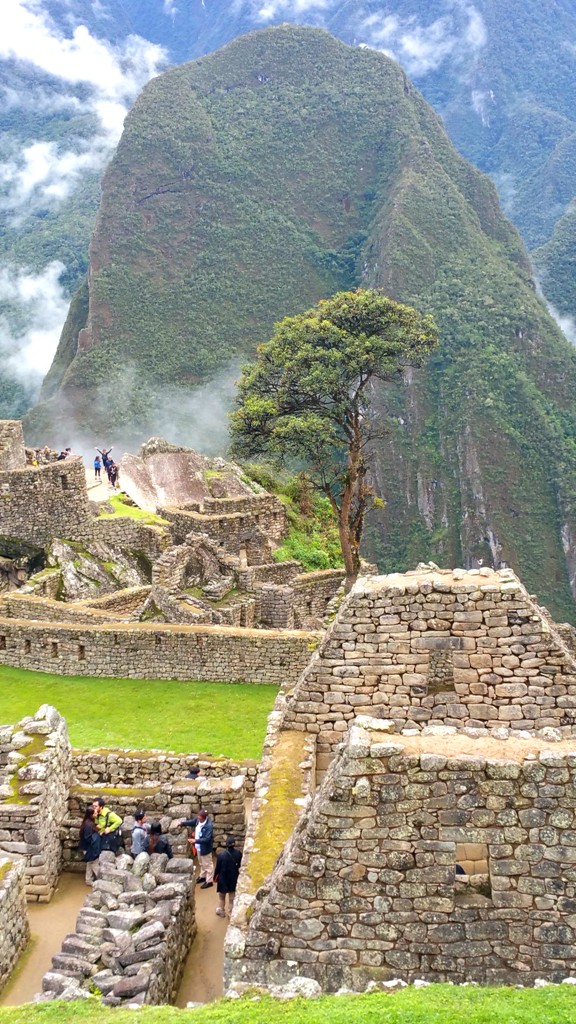
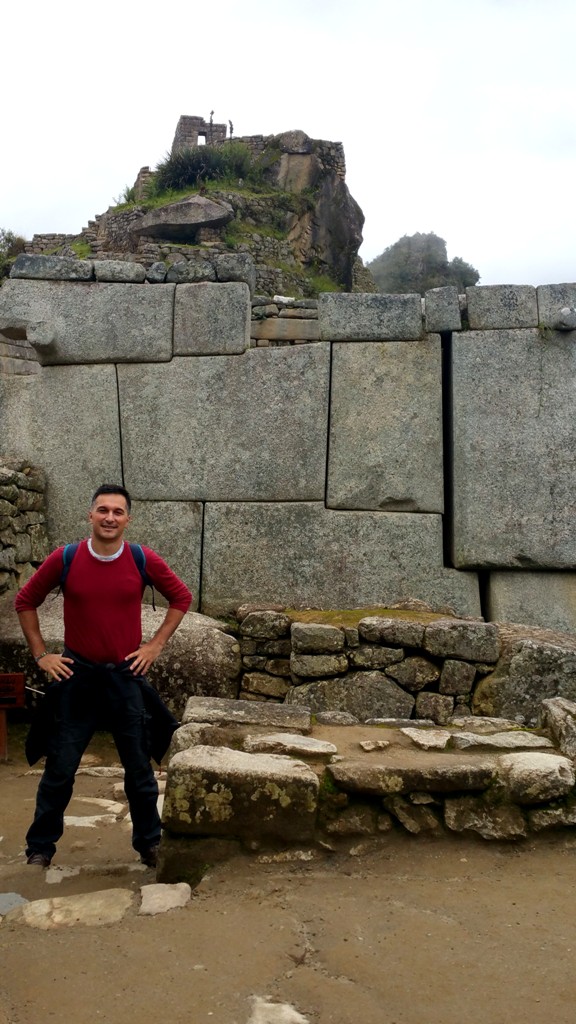
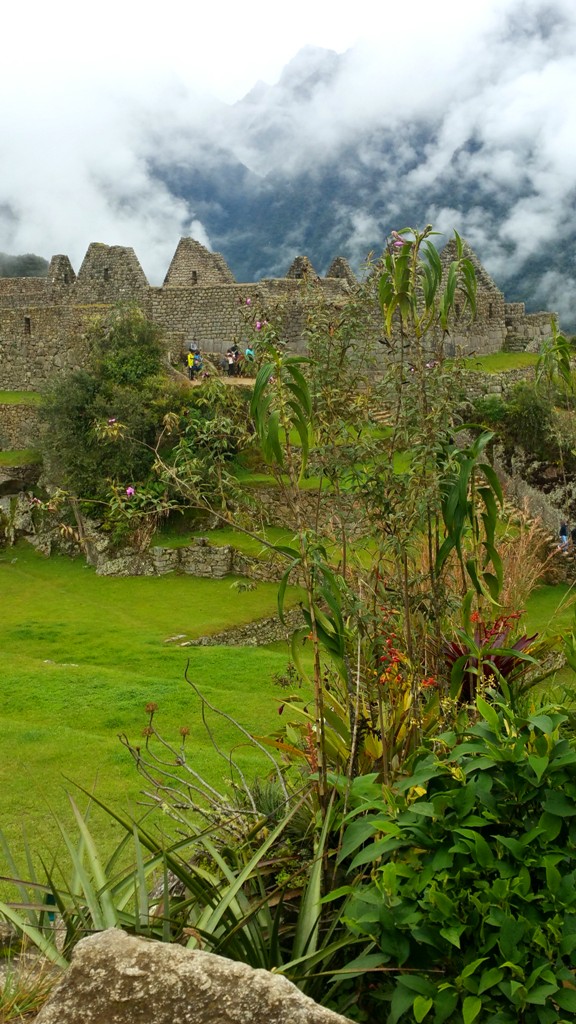

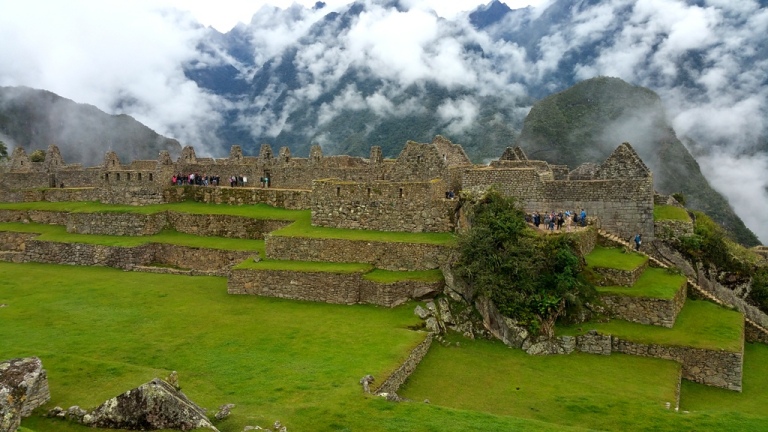
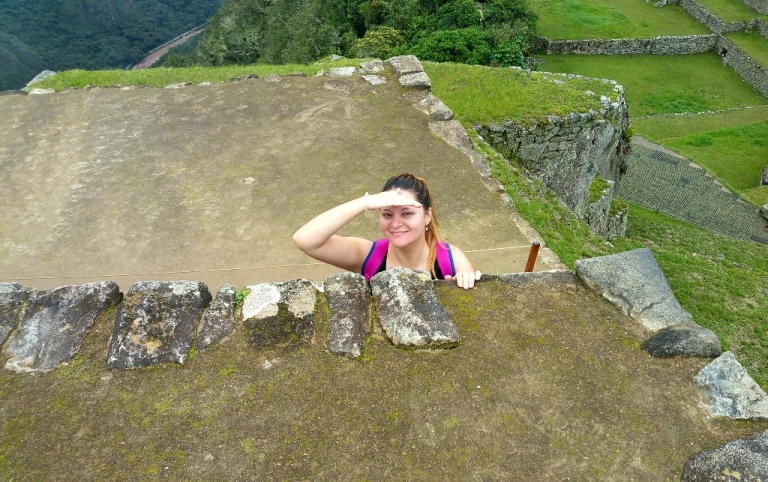
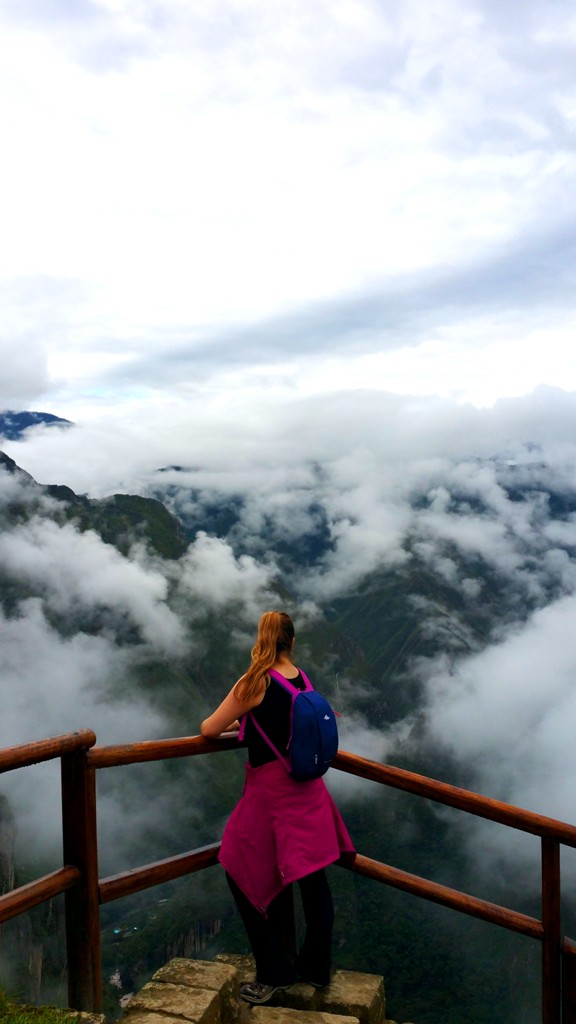

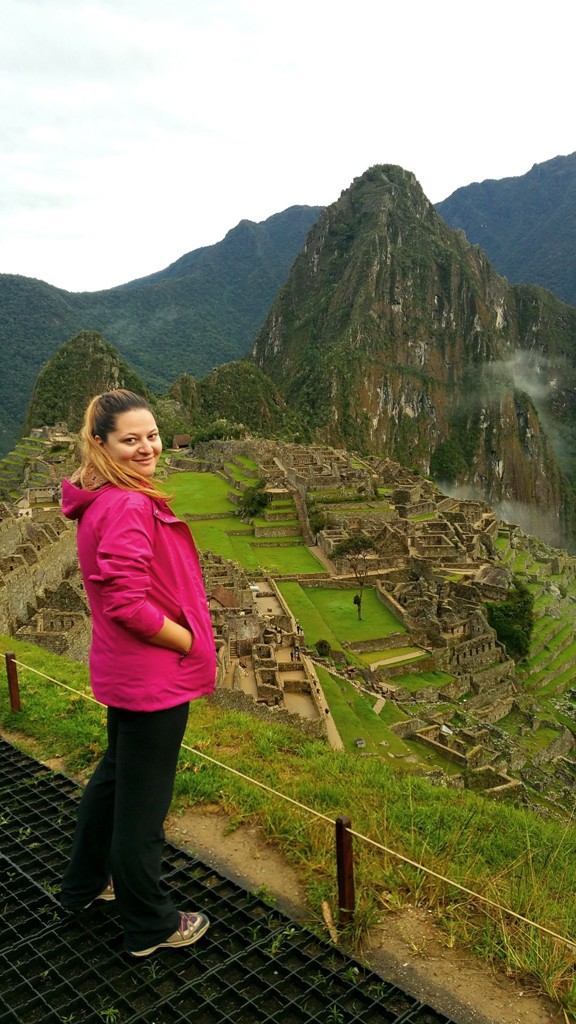
We start exploring the surroundings and realize how immense the fortress is. The construction is not just the middle plateau you see in all pictures. Thousands of stone terraces have been built from the base of the mountain, to sustain such a construction.

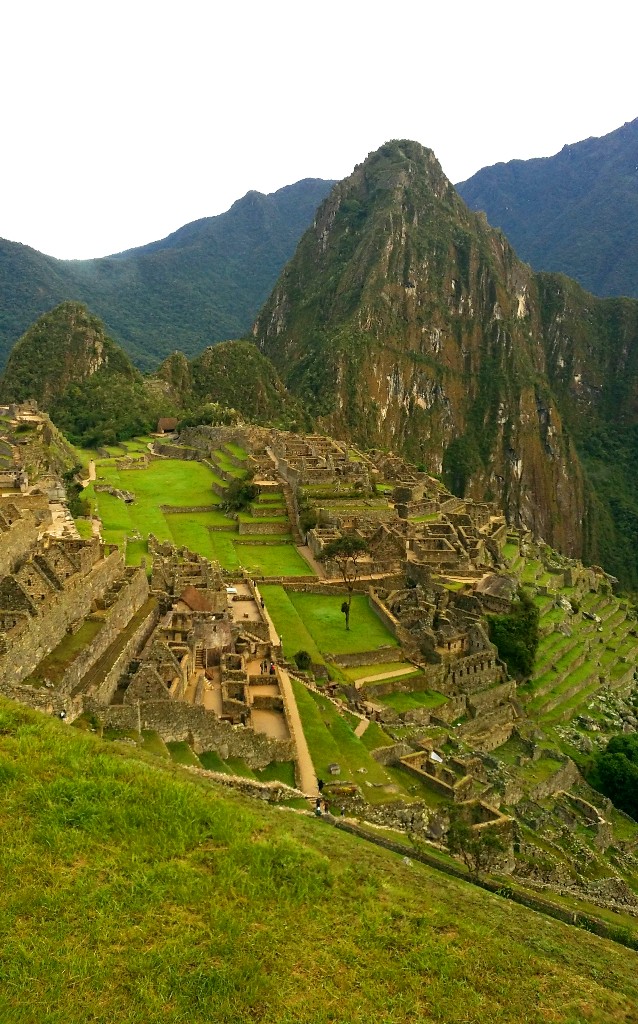

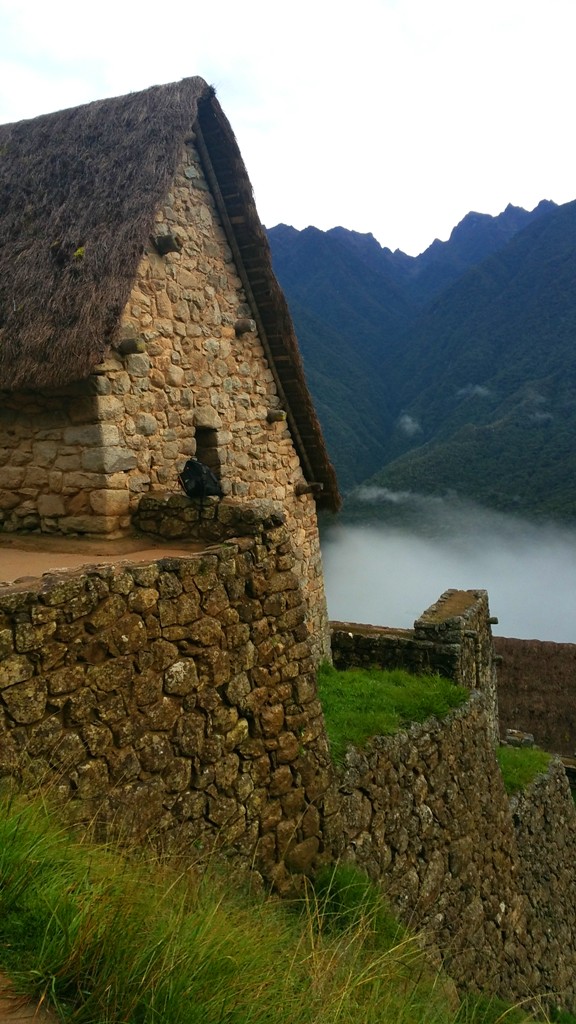
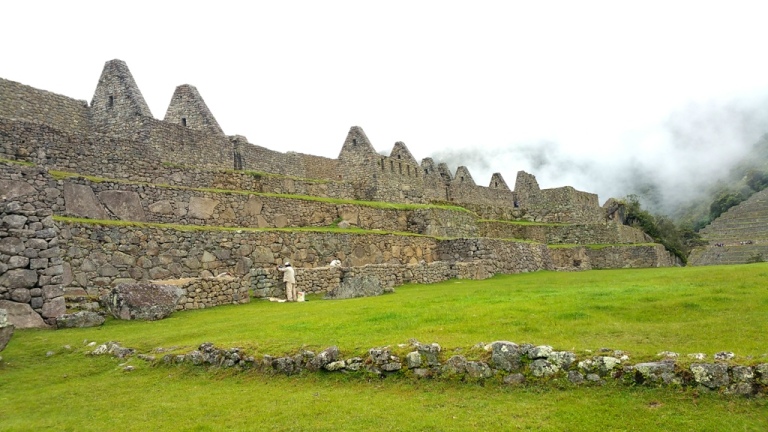
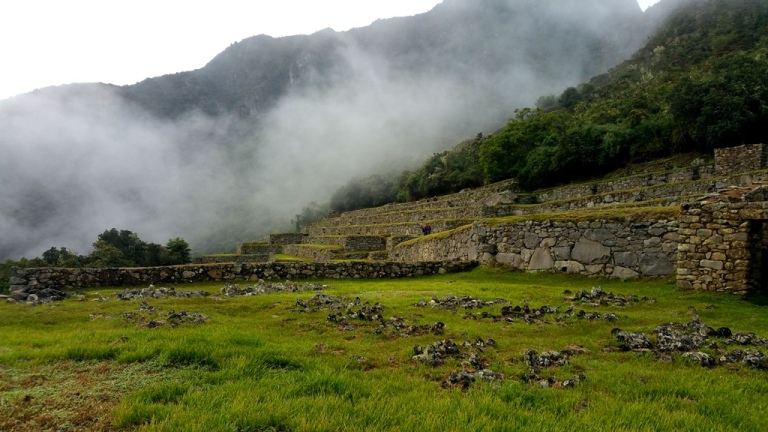

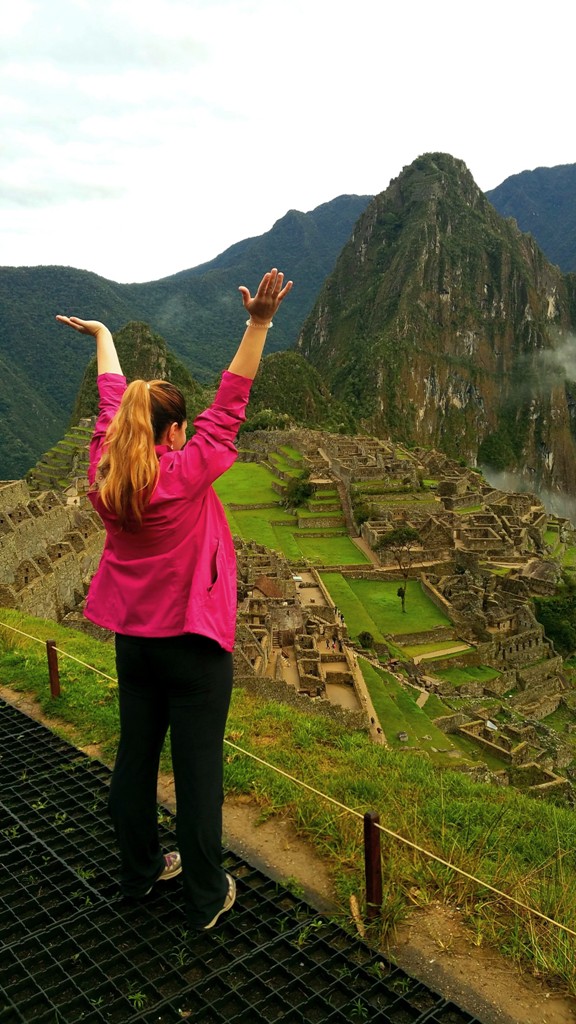
Wild llamas are quietly walking along with us on the green fields. From time to time, their shy baby-llamas lift their noses up in the air, just to say hi. They are probably used to lots crazy people, but for us, it’s the most amazing day of our lives.
Can’t believe we are here. WE MADE IT!
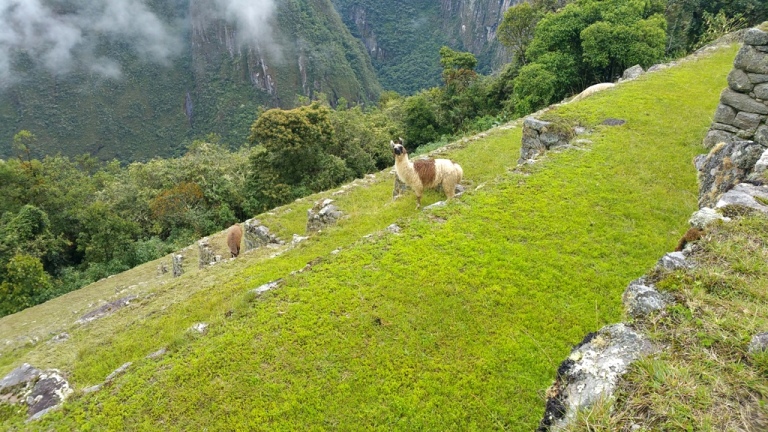
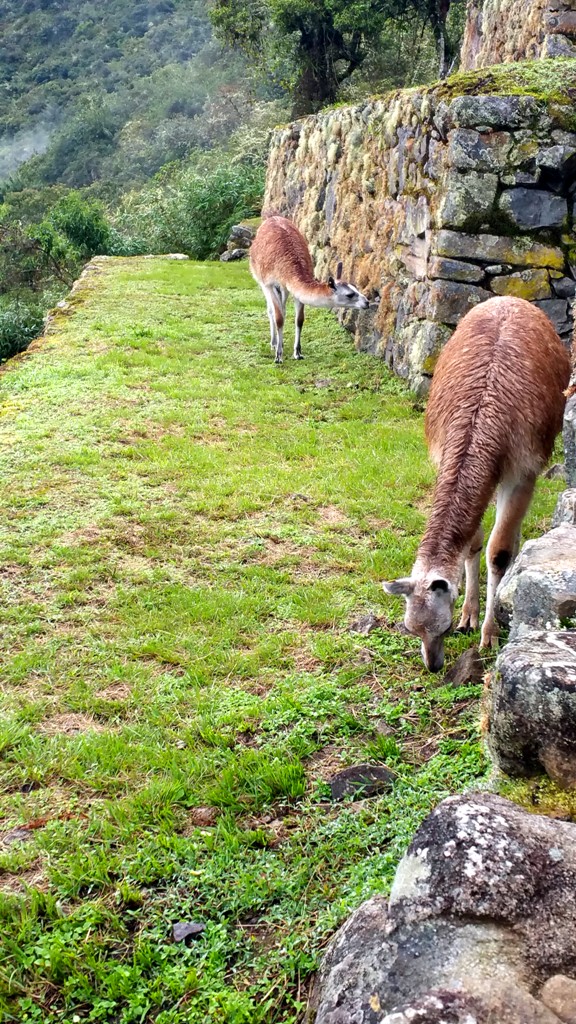
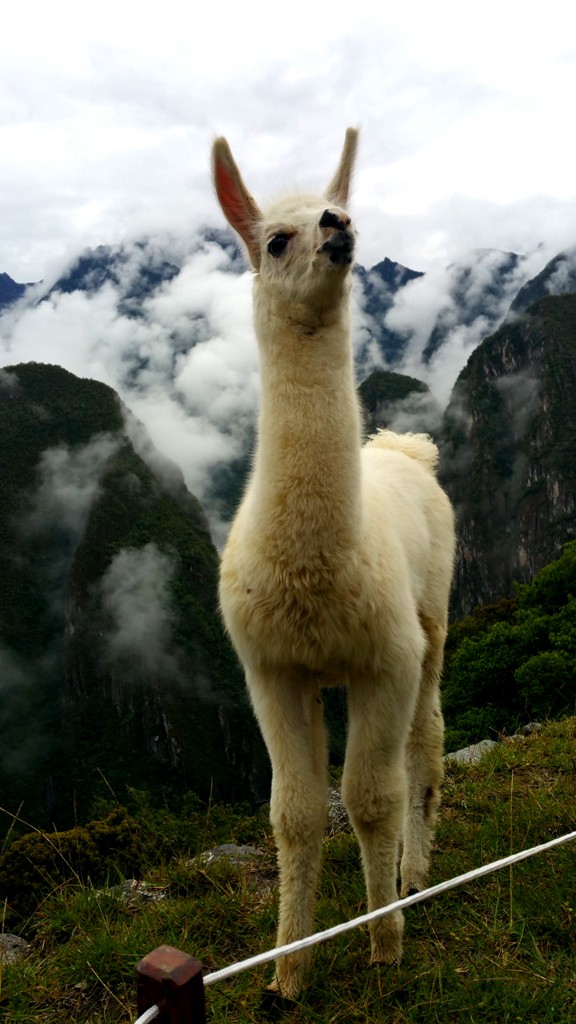
Map
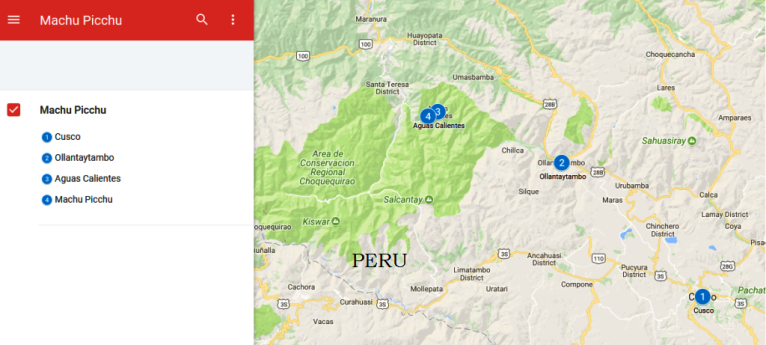
What to bring
- Small backpack (leave your heavy luggage in Cusco, there’s no need carrying it all the way to Machu Picchu)
- Passport
- Rain gear – jacket + trekking pants
- Hiking boots
- Hat/cap
- Sunglasses
- Insect repellent
- Sunscreen
- Water
- Snacks
Altitude sickness
Machu Picchu is at 2430 meters, and Cusco at 3400 meters. Machu Picchu isn’t really the potential problem of altitude sickness, Cusco is. 🙂 So make sure you spend 2-3 days in Cusco first, drink a lot of water, chew coca leaves, eat lightly and rest to help the body acclimatize.
We didn’t have any problem since we were coming from 5000 meters of altitude in Bolivia, but other travelers were not so ‘energetic’ as we were.
Budget & How to get to Machu Picchu
What makes Machu Picchu so attractive, that can also be frustrating and stressful, is that there’s no best way to reach it. There are a few options, but the fast ones are expensive, the cheap ones take a lot of time and physical effort, the treks must be booked in advance, and so on.
Here are the ways to reach Machu Picchu, travel time and costs for each.
- Transportation
1. Minibus+Train+Bus/Hike
Cusco – Ollantaytambo, by colectivo taken from Pavito street in Cusco:
2 h, 5 USD/pers/1 way
+ Ollantaytambo – Aguas Calientes, by train with IncaRail or PeruRail:
1.5 h, 70 USD/pers/1 way
+ Aguas Calientes – Machu Picchu, by bus:
30 min, 12 USD/pers/1 way
or Aguas Calientes – Machu Picchu, hike:
2 h, free
2. Bus+Walk+Bus/Hike
Cusco – Hidroelectrica, by bus:
6 h, 30 USD/pers/roundtrip
+ Hidroelectrica – Aguas Calientes, walk:
3 h, walk along the train tracks
+ Aguas Calientes – Machu Picchu, by bus:
30 min, 12 USD/pers/1 way
or Aguas Calientes – Machu Picchu, hike:
2 h, free
3. Hike
The traditional Inca Trail takes 4 days, 45 km, and costs ~650 USD/pers for a moderate to difficult hike. The Salkantay Trek is the main alternative, taking 5 days, 60 km, at a cost of ~300 USD/pers. Looks more difficult than the Inca Trail, being at a higher altitude.
(!)Only the Inca Trail will lead you directly to Machu Picchu, via the Sun Gate. All the other alternative treks will bring you to Aguas Calientes or Ollantaytambo, from where you have the options described above at 1.
Other costs:
- Accomodation in Aguas Calientes
45 USD/double room
- Entrance ticket to Machu Picchu
50 USD/pers
- Food at a restaurant in Aguas Calientes (we found tips of 10-15% automatically added to the final bill)
15 USD/pers
Conclusion
If you wanna go with options 1 or 2, which we did, you can buy everything in Cusco’s main square. We booked the train tickets, Machu Picchu entry ticket, Aguas Calientes accommodation 1 day before the departure, and bus tickets on the spot. It was rainy season (March), but a few days in advance in high-season (late April to early October) will do it. However, the trails must be booked 4-6 months in advance.
The Machu Picchu ticket corresponds to a specific day and time interval (morning: 6 AM-12 PM or afternoon: 12 PM-5 PM). Only 2500 tickets are available per day.
Whatever you choose, it will be hard, exhausting and pricey. But in the end, when you get up there, it will all be worth it.
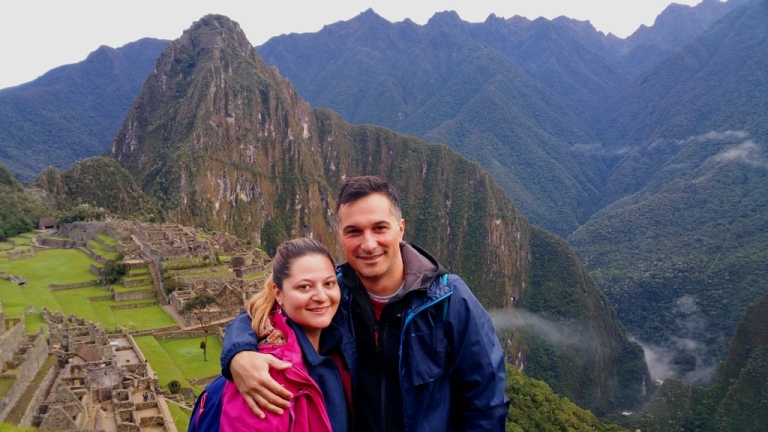
In January 2018 we booked one-way tickets, took our backpacks and left cozy old Europe, for (hopefully) the greatest adventure of our lives: South America. If you like our story, don’t forget to spread the word!
South America in 2.5 months – all you have to know to do it yourself
www.instagram.com/haihuistory_blog
Happy travels and stay safe!


Wonderful! also known as Jane Mar on Facebook!
LikeLike
Hello dear! Welcome to my online travel diary! 🙂 Hope you found some useful tips for your next journeys.
LikeLike
That is absolutely stunning! Awesome pictures 🙂
LikeLiked by 2 people
Aww thank you so much, Kasia! It’s so hard to take pictures out there, with thousands of people doing the same :)))) happy u liked the story! 🙂
LikeLiked by 2 people
Very much!
LikeLiked by 1 person
Great story and great pics !
LikeLiked by 1 person
Thank you very much! I hope it will be of help for anybody heading to Machu Picchu. 🙂
LikeLiked by 1 person
OMG…. it was beautiful. The photos are stunning
LikeLiked by 1 person
What can i say… For me it was my dream for about 10 years…always thought it’s impossible to make it come true, until last year when i suddenly realised you can do anything if you plan it right 🙂 )
LikeLiked by 1 person
It is soo true:) talking about it, Mickey just ask me to go to Machu Picchu, but I said no. ha..ha.. maybe next time, I want to go to Bhutan first:)
LikeLiked by 1 person
I’ve been to Machu Picchu twice and your blog rekindled all the excitement and exhilaration of my trips there. Beautiful photos of a wonderful experience.
LikeLiked by 1 person
Oh, thank you for dropping by and for the nice words. It was a day to remember for life!☺️
LikeLike